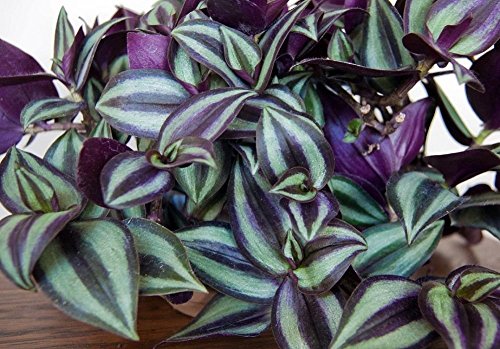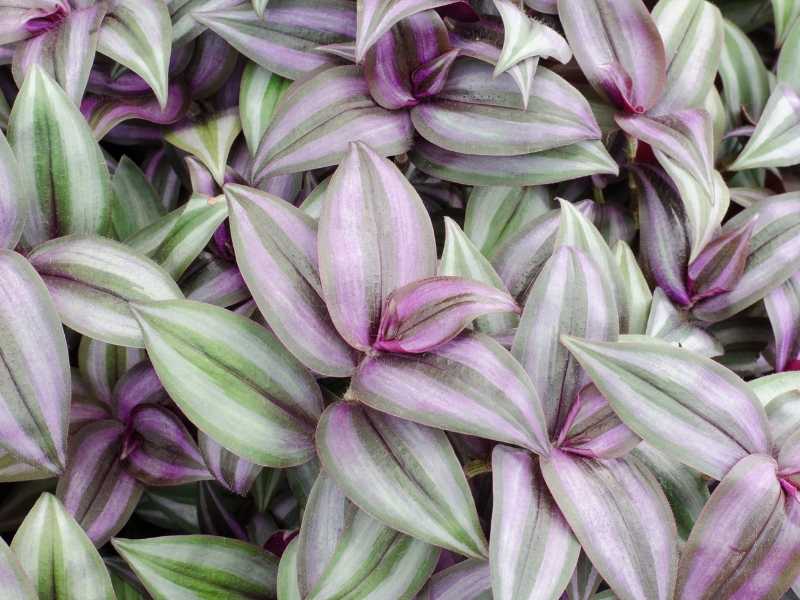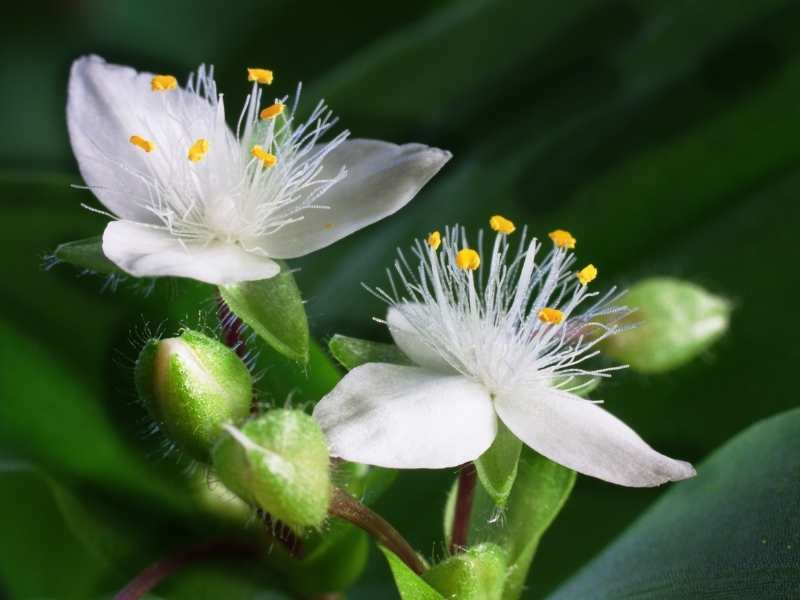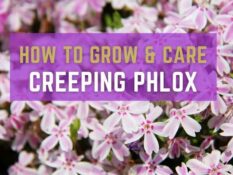The Wandering Jew plant, also known as the inch plant, is a great plant to add to your home or office space because it can grow in low light conditions and doesn’t require much watering. It tends to thrive when cared for with the right blend of love, water, sunlight, and fertilizer. To help you care for yours like a pro we have some tips below on taking good care of these plants so that they stay healthy and happy all year long!
What Is The Wandering Jew Plant, And What Does It Look Like?
The Wandering Jew is not a single plant - it's the name given to a few different plants in the genus Tradescantia. When grown outdoors, they are considered invasive in many regions of the world, but those same growing characteristics make them perfect as indoor vining plants. They can be grown as ground covers, hanging baskets, or houseplants or can be trained to grow on trellises, fences, or walls.
Leaves: The plants have leaves with pointed tips and serrated edges that grow in a wandering pattern. Leaves are typically green in color, but they can also be variegated with white or purple patterns; some varieties have leaves that change color as seasons progress from summer green to autumnal reds. The leaf stems are usually long, round, and green or white.
Flowers: Flowers are usually small and white but can be pink, red, or purple.
Bulbs: The bulb is usually dark purple and around the size of a walnut.
Where to buy Wandering Jew Plant?
You can buy Wandering Jew plants in any local store or online.

What Are The Most Common Pests That Attack Wandering Jew Plants? And How To Prevent Common Wandering Jew Pests and Diseases?
Aphids, spider mites, and mealybugs are all potential threats to your wandering Jew plant. Aphids can be dealt with by using an insecticidal soap spray, or you may have better luck getting rid of them manually. Spider Mites are difficult to eliminate as they keep coming back. Mealybugs are a little easier to combat but can still be persistent; try spraying them with insecticidal soap or use your fingernails to scrape off their white cotton coating and dispose of it.
Here are some lists of products that are recommended to control pests in Wandering Jew Plants.
- Trifecta Crop Control Ready to Use Natural Pesticide
- General Hydroponics GH2045 AzaMax
- Bonide- Pyrethrin Garden Insect Spray Mix, Insecticide
- Harris Neem Oil, 100% Cold Pressed and Unrefined for Plant Spray, Skin, and Hair
- Monterey LG6232 Ready to Use Insecticide
- Bonide 811 Copper 4E Fungicide

Looking for the best app to identify any plant using your iPhone or android?
What Are The Types Of Wondering Jew Plant Varieties
A common misconception about the Wandering Jew Plant (Tradescantia) is that it's a single plant. In reality, several types of plants fall under this umbrella name. The Tradescantia pallida, for example, has been classified by some as an invasive species in many regions of the world because of its high growth rate and ability to produce dense mats of vegetation. However, these same characteristics make it perfect as an indoor vining plant! They produce beautiful vines, can be grown in hanging baskets or pots, and are very easy to take care of!
Wandering Jew Plant Name
Tradescantia zebrina, Tradescantia pallida, and Tradescantia fluminensis have all been called Wandering Jew Plants at one point or another, depending on their location in the world.
Tradescantia zebrina (Zebra-shaped leaf)

Tradescantia fluminensis (green leaves with white flowers)

Tradescantia pallida (purple leaves with pink flowers)

How To Care For Wandering Jew Plant?
The wandering Jew plant is low maintenance and easy to care for the indoor vine. It's hardy enough that it can be grown anywhere and thrives with little effort from the gardener. The Wandering Jew plant loves being in the sun but can also be happy with some shade.
Wandering Jew Propagation: How To Propagate Wandering Jew?
The wandering Jew plant is low maintenance and easy to care for the indoor vine. It's hardy enough that it can be grown anywhere. f you want to propagate your wandering jew plant, you must take a stem and cut it below the node. It is until the wound dries up before planting in soil or water, depending on what type of wandering jew plant it is. Wandering Jew plant loves being in the sun but can also be happy with some shade.
How Often To Water Wandering Jew?
Water your wandering Jew about once per week by allowing the top inch of soil to dry out before the next watering.
What Type Of Soil Is Good For Wandering Jew Plants?
The wandering Jew plant thrives in moist soil, so make sure your container has drainage holes at the bottom and allow plenty of water to seep through when you're first planting it until a solid root system is established.
When And How To Fertilize Wondering Jew Plants?
The wandering Jew plant does not need to be fertilized. These hardy plants can benefit by occasionally feeding them with an all-purpose water-soluble fertilizer. If desired, you can also use time-release pellets or spikes in the soil for extra nutrients every six months. You can also use Osmocote PotShots, another slow-release plant food that feeds the plant for six months.
How Much Sun Does a Wandering Jew Need?
The wandering Jew plant prefers bright but indirect light and doesn't require direct sunlight to thrive, so it's a perfect fit for windowsills in an office or home with limited outdoor space.
Pruning Wandering Jew: When And How To Prune Wandering Jew?
Wandering Jew plants are great for indoor growing, as they can be trained to grow up a trellis or other structure. You might wonder how to prune Wandering Jew plants. It is important not to prune them back too hard during winter because you don't want them to flower and die off. n order to keep your plant healthy, it's important to prune it back before the end of winter and then again in late spring.
Weeding: How Often Should I Weed My Wandering Jew?
Keeping the wandering jew plant from getting choked out by weeds is important. o do t s, you should weed your wandering Jew once a month or more if needed.
The wandering jew plant is a perfect indoor vine that can grow in just about any environment with the right care! f you a looking for an easy-to-care-for houseplant, or if you have limited gardening space, the wandering Jew Plant might be exactly what you need! e hope t t this post has been helpful in your quest to learn more about the Wandering Jew plant.
FAQs
What are the different types of Wandering Jew plants? What are different wandering jew plant names?
There are many types of wandering jew plants, the most common being the 'Inch Plant,' a vigorous grower that can get up to two feet high with its trailing stems.
Wandering jew plant care: Are Wandering Jew plants easy to care for?
Wandering jew plant care is fairly easy. The wandering jew likes to be watered generously, but only when the soil has dried out, or it can rot if left too wet. Pruning, trimming, and shaping your wandering jew plants is a great way to keep them looking healthy.
Is a Wandering Jew annual or perennial?
Wandering Jew plants are considered annuals and grow best in warm climates. They can be brought indoors for the winter as long as they're given plenty of light.
How to use wandering jew plant: What is wandering jew used for?
The wandering jew plant is known for its intense green color and trailing vines. It can be used as a hanging basket, ground cover, or even in the landscape to create some dimension.
Wandering Jew Plant: What are wandering jew problems?
If you are wondering about the problems with Wandering Jews, there are no major issues that plague the wandering jew plants other than the fact that they can be invasive in some regions around the world. The wandering jew plants tend to take over other areas and species of plant life. While it may not have many practical uses, wandering jew makes a pretty addition to any garden or landscape.
How to care for a wandering jew plant?
One of the best things about caring for wandering Jew plants is their resilience. They can withstand many environments and thrive in most, with minimal upkeep requirements. If you are growing your Wandering Jew indoors, keep it near a window with southern exposure. In general, they prefer partial sun or filtered light.
Can we keep wandering jew plants outdoors?
This wandering jew can be grown outdoors in a pot or container, but it needs to be sheltered from harsh winds and full sun. If you are growing outside, make sure the soil is moist and that you don't overwater!
What is the best way for wandering jew plant care? Can we grow wandering jew plants indoors?
The wandering jew plant is a low-maintenance houseplant that can be difficult to kill with neglect and thrives in most indoor conditions. It needs plenty of sunlight but also tolerates lower levels of light well.
Can we grow wandering jew in water?
Nope! The wandering jew plant is a succulent that needs soil to grow, not water.
Do wandering Jew plants need pruning?
Yes, especially if you are growing it indoors or outdoors in the garden. Prune regularly and keep your plants from getting too leggy by regular trimming.
What is the best way of wandering jew plant propagation? How to propagate Tradescantia 'Wandering Jew' plant?
There are a couple of ways to keep new wandering jew plants coming. They can be propagated from stem cuttings or spawn roots in water and then be planted in soil when ready.
What are the common pests in the Wandering Jew plant? How to Prevent Common Wandering Jew Pests and Diseases?
Wandering jews are prone to several pests, including aphids and spider mites. To avoid these problems, try to keep your wandering jews away from other plants which may carry the same insects or diseases. Additionally, ensure you only water your wandering Jew when necessary to prevent fungal rot from forming on its leaves, especially in humid areas like Florida or Texas.
What are some wandering jew plant benefits?
One of the greatest benefits of wandering jew plants is that they are so easy to propagate. You can grow a new plant in just about any environment from cuttings, leaves, or water (rooting). Another benefit is their colorful foliage which will brighten up any space it occupies for months.
Facts about wandering jew plant spiritual meaning?
The spiritual meaning of wandering jews is a topic that many cultures have debated for centuries. Some say it symbolizes the idea that life's journey never ends and one should live each day as they would their last, while others believe it to be representative of Christianity.
What are some problems with owning wandering jew plants?
The biggest problem with wandering Jew plants is that they are so invasive. They will take over any given space in a matter of weeks if left unchecked and also have been known to attack other nearby garden beds or flowerbeds.
Are you wondering if jew plants are toxic to cats or pets?
The sap from the Wandering Jew plants may irritate the digestive tract of some cats. It is better to keep your plants away from your feline friends!
What should you do with wandering jew plant leaves?
The Wandering Jew is a vining plant that will grow around and up walls, poles, fences, etc. If left unchecked, the vines can quickly get out of control and become invasive. So trim regularly.
What are the wandering jew light requirements?
The wandering Jew plant prefers bright indirect light, so a window with ample sunlight but not too much direct sun is best. It will do well in lower lighting conditions if given time to adjust gradually between periods of brighter and darker as it grows.
Are the Care Tips for Growing an African Spear Plant Similar to those for a Wandering Jew Plant?
Yes, the care tips for growing an African spear plant are similar to those for a Wandering Jew plant. Both plants require bright but indirect sunlight, well-draining soil, and regular watering. However, the African spear plant may need more space to grow due to its larger size. Proper african spear plant care is essential for its health and growth.
What are the wandering jew watering requirements?
Wandering Jews always prefer moist soil, so it will require regular watering. But do not overwater! Otherwise, you might see root rots. If the soil is dry or you see wilting leaves, your Wandering Jew plant needs water.

How to master gardening? Download these essential home and gardening ebooks today!













